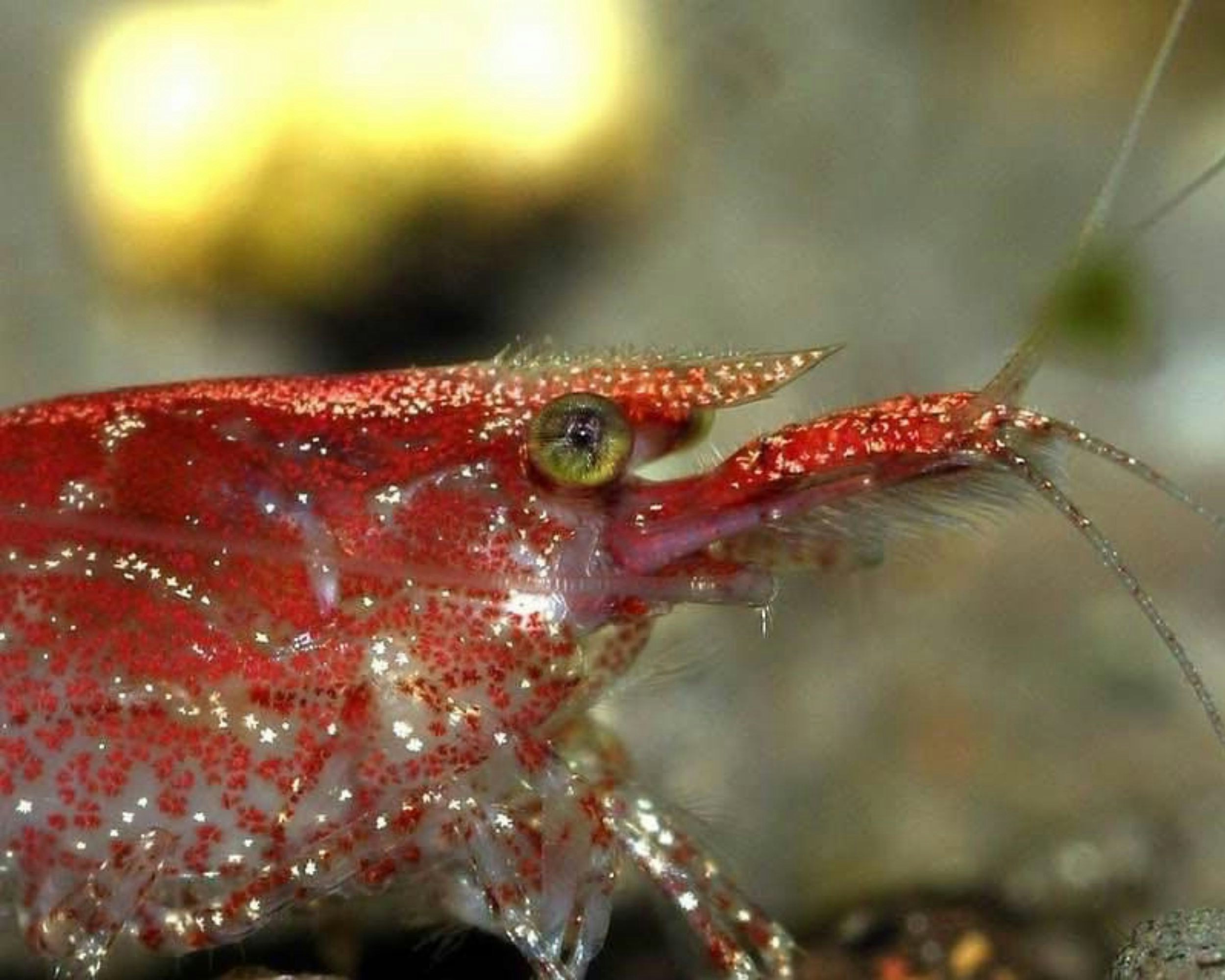How Often do Cherry Shrimp Breed or Lay Eggs?
Cherry shrimp are known for their high breeding rate, making them a great choice for those looking to start a shrimp colony in their aquarium. These shrimp are capable of breeding at a young age, typically reaching sexual maturity around 3 to 4 months old. Once they reach this stage, they are ready to reproduce and can continue to do so throughout their lifespan, which is typically around 1 to 2 years.
When it comes to the breeding process, cherry shrimp have a unique method known as “internal fertilization.” Unlike many other aquatic species, cherry shrimp do not lay eggs that hatch externally. Instead, the female shrimp carry the fertilized eggs within their bodies until they are ready to hatch. This adaptation is believed to provide the eggs with a higher chance of survival, as they are protected from predators and environmental fluctuations.
During the breeding process, the male cherry shrimp will initiate courtship by performing a series of intricate dances and movements to attract the female’s attention. These dances often involve the male waving his large, fan-like claws in an elaborate display. If the female is receptive, she will respond by reciprocating the movements and eventually releasing pheromones to signal her readiness to mate.
Once mating has occurred, the female cherry shrimp will carry the eggs for approximately 3 to 4 weeks before they are ready to hatch. The number of eggs carried by the female can vary greatly, with some individuals carrying as few as 10 eggs, while others may carry up to 30 or more. The exact number of eggs can depend on factors such as the female’s age, size, and overall health.
During the incubation period, the female cherry shrimp will continue to go about her daily activities, grazing on algae and scavenging for food. It is important to provide a well-balanced diet during this time to ensure the female has the necessary nutrients to support both her own health and the development of the eggs.
Once the eggs are ready to hatch, the female will release them into the water, where they will undergo a series of molts before reaching their juvenile stage. These molts are crucial for the shrimp’s growth and development, as they shed their exoskeleton to accommodate their increasing size. It is important to provide a suitable environment with plenty of hiding places and plants for the young shrimp to seek shelter during this vulnerable period.
As the juvenile shrimp continue to grow, they will gradually develop their vibrant red coloration, which is characteristic of the cherry shrimp species. With proper care and a suitable environment, these young shrimp will eventually reach sexual maturity and continue the cycle of breeding, ensuring the sustainability of the colony.
Egg Development
After the female cherry shrimp has been successfully fertilized, she enters the gestation period, which typically lasts for about 3 to 4 weeks. During this time, the female’s abdomen becomes noticeably larger as the eggs develop within her pouch. As the eggs near the end of their development, they start to darken in color, indicating that they are close to hatching.
Once the eggs are ready to hatch, the female cherry shrimp will find a safe spot in the aquarium to release the young shrimp, known as fry. The fry are tiny and transparent, making them difficult to spot among the plants and substrate. They will spend their early days hiding and foraging for food in the aquarium, gradually growing and developing their vibrant red coloration.
Cherry shrimp are known for their high reproductive potential, with a single female capable of producing anywhere from 20 to 30 fry in each brood. This, combined with their short reproductive cycle, can lead to a rapid increase in population size within an aquarium if conditions are favorable.
It is important to note that cherry shrimp are known to be prolific breeders, but their reproductive success can be influenced by various factors. Water quality, temperature, and the availability of food and hiding places all play a role in the overall health and breeding success of cherry shrimp.
As a hobbyist, it is important to provide a suitable environment for cherry shrimp to thrive and reproduce. This includes maintaining stable water parameters, providing a well-balanced diet, and creating ample hiding places for the shrimp to feel secure during the molting and breeding process.
Overall, the reproductive cycle of cherry shrimp is a fascinating process that showcases the resilience and adaptability of these small crustaceans. Their ability to reproduce at a young age and produce multiple broods throughout their lifespan makes them a popular choice for aquarium enthusiasts looking to establish a thriving shrimp colony in their tanks.
Frequency of Breeding
Cherry shrimp are known for their high breeding potential and can breed quite frequently under optimal conditions. On average, a female cherry shrimp can produce a new brood every 30 to 45 days. However, it’s important to note that the actual frequency of breeding can vary depending on several factors, including water parameters, diet, and overall health of the shrimp.
Water temperature plays a crucial role in the breeding frequency of cherry shrimp. They thrive in temperatures between 72°F to 82°F (22°C to 28°C). Higher temperatures tend to accelerate their metabolism, leading to more frequent breeding. Conversely, lower temperatures can slow down their reproductive cycle.
Another factor that influences the breeding frequency is the availability of food and nutrients. Cherry shrimp are omnivorous and require a balanced diet to maintain optimal health and reproductive capacity. Providing them with a varied diet that includes high-quality shrimp pellets, algae, and biofilm will ensure they have the necessary nutrients for successful breeding.
The overall health and stress levels of cherry shrimp also play a role in their breeding frequency. Shrimp that are kept in a stable and well-maintained aquarium with suitable water parameters are more likely to breed regularly. Conversely, if the shrimp are exposed to stressful conditions such as poor water quality or aggressive tankmates, their breeding frequency may decrease.
Additionally, the age and size of the shrimp can affect their breeding frequency. Younger shrimp may not have reached sexual maturity yet and will not breed until they are fully developed. On the other hand, older shrimp may have a decreased breeding frequency due to age-related factors.
The genetics of the shrimp can also impact their breeding frequency. Some strains of cherry shrimp have been selectively bred for higher reproductive rates, while others may have lower fertility. It’s important to consider the genetic background of your shrimp when determining their expected breeding frequency.
In conclusion, cherry shrimp have the potential to breed frequently under optimal conditions. By maintaining suitable water parameters, providing a balanced diet, and ensuring the overall health and well-being of the shrimp, hobbyists can maximize the breeding frequency of these fascinating creatures.
Factors Affecting Breeding Success
While cherry shrimp are generally prolific breeders, there are several factors that can affect their breeding success. Understanding and addressing these factors can help ensure a higher rate of successful breeding in your aquarium.
Water quality is of utmost importance when it comes to the breeding success of cherry shrimp. They are sensitive to changes in water parameters, particularly ammonia and nitrite levels. It is crucial to regularly test the water and maintain optimal conditions by performing regular water changes and using a reliable filtration system.
The presence of hiding places and sufficient vegetation in the aquarium also plays a role in breeding success. Cherry shrimp require places to hide and feel secure, especially during molting and the gestation period. Providing them with dense vegetation, such as mosses or live plants, and structures like driftwood or rocks will create a conducive environment for breeding.
Water hardness and pH levels can also impact breeding success. Cherry shrimp prefer slightly alkaline water with a pH range of 7.0 to 8.0 and moderate hardness. Monitoring and adjusting these parameters, if necessary, can help create an optimal environment for breeding.
Lastly, the presence of suitable tankmates can influence the breeding behavior of cherry shrimp. Avoid keeping them with aggressive or larger fish species that may prey on the shrimp or disturb their breeding activities. Opt for peaceful tankmates such as small schooling fish or other shrimp species that coexist well with cherry shrimp.
Another factor that can affect the breeding success of cherry shrimp is the temperature of the aquarium. Cherry shrimp thrive in temperatures between 72°F and 82°F (22°C to 28°C). Maintaining a stable temperature within this range is important for their overall health and breeding behavior.
In addition to water quality and temperature, the availability of food is crucial for successful breeding. Cherry shrimp are omnivores and require a varied diet to thrive and reproduce. Providing them with a balanced diet that includes high-quality shrimp pellets, algae wafers, and occasional live or frozen foods like brine shrimp or daphnia will ensure they have the necessary nutrients to support breeding.
Furthermore, the size of the aquarium can impact the breeding success of cherry shrimp. A larger aquarium provides more space for the shrimp to explore and establish territories, which can lead to increased breeding activity. It also allows for a more stable environment, as water parameters can be more easily maintained in a larger volume of water.
Lastly, the age and health of the cherry shrimp can affect their breeding success. Young, sexually mature shrimp are more likely to breed successfully compared to older individuals. It is important to ensure that the shrimp are in good health and free from diseases or parasites that could hinder their reproductive capabilities.
By considering and addressing these factors, you can create an optimal environment for breeding cherry shrimp in your aquarium. Monitoring water quality, providing hiding places and vegetation, maintaining proper water parameters, choosing suitable tankmates, regulating temperature, providing a balanced diet, and ensuring the overall health of the shrimp are key steps to increasing their breeding success.

